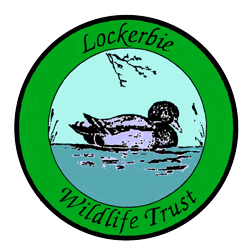Please follow this link: https://www.lockerbie-wildlife-trust.co.uk/mobile
Wildlife recorded at Eskrigg Reserve and Woodland Walks
All wildlife can be classified into groups that have features in common (see example of classification of British Insects). A group of living things that have so many common features that they can reproduce and have fertile young is called a species.
Most species at the Reserve can be put into the two major groups: PLANTS and ANIMALS. All the other organisms can be grouped under a third heading: the PROTISTS. Each of these groups can be sub-divided as follows:
Bacteria
(including Cyanobacteria
or blue-green algae)
Protozoa
(including Amoebae,
Ciliates & Flagellates)
Slime Moulds
(including Cellular &
Plasmodial forms)
Algae
(including unicellular,
filamentous & colonial)
Lichens
(including rusty, leafy &
shrubby forms)
Spore Producing
Seed Producing
On seed producing plants
Invertebrates
(without backbones)
Vertebrates
(with backbones)
Arthropods
(Hard outer
skeleton &
jointed legs)
Other Invertebrates
Insects
Other Arthropods
Cold Blooded
Fish
(Aquatic- fins,
gills & scaly skin)
Amphibians
(Breed in water,
smooth, moist skin)
Reptiles
(Dry,scaly
skin, lay eggs
with soft shells)
Note: Several classification groups are not represented at Eskrigg Reserve and have not been included in the above diagrams.
Click on any of the groups that are highlighted to find out more about them.
© 1988 - | Privacy Policy | contact

